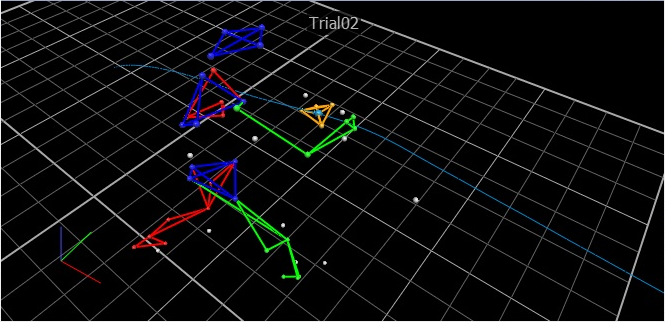A Scottish Ultimate coach has been granted access to a state-of-the-art motion capture laboratory and is preparing to spend the summer doing research on the mechanics of throwing a disc.
June 3, 2013 by Charlie Eisenhood in News with 4 comments
 A Scottish Ultimate coach has been granted access to a state-of-the-art motion capture laboratory and is preparing to spend the summer doing research on the mechanics of throwing a disc.
A Scottish Ultimate coach has been granted access to a state-of-the-art motion capture laboratory and is preparing to spend the summer doing research on the mechanics of throwing a disc.
The research will be nearly the first of its kind — in 1997, Sarah Hummel, a UC Davis graduate student, did a single thrower analysis for her master’s thesis. But Benji Heywood, the coach of the University of St. Andrews in Scotland, is planning to track dozens of different throwers to try to find out more about how the different approaches to throwing affect the flight of the disc.
Here’s how it works, as described by Heywood on his blog:
[quote]The thrower and the disc are dotted with about 30 reflective markers, on all the joints (wrists, knees, shoulders etc.) and other places of interest. These markers are then picked up in real time by around 15 cameras working at 400 frames/second. For every marker, for every frame, we get the position (accurate to around half a millimetre in 3 dimensions), and also the velocity and the acceleration. The distance between any two markers, or the angle between two or more, can also be automatically calculated.[/quote]
This will allow for incredible detail into the biomechanics of throwing: how does arm speed affect disc velocity? What about wrist snap? Does more body torque translate directly into throw distance?
With a large sample size of participants, Heywood is hoping to track various techniques and styles. The cameras and markers are so sensitive that “test-runs pick up a tiny repeated oscillation in the z-axis (up and down) after release,” which Heywood think suggests that the disc flexes when you grip it and, after release, it vibrates early in its flight.
That level of detail will allow Heywood to examine different facets of throwing as he tries to find some commonalities to great throwers.
If you want to be involved, get in touch with Heywood at his blog, Understanding Ultimate, or his Facebook page. The trials will be running throughout the summer and into the early fall. He plans to publish results in an academic paper as well as on his blog.